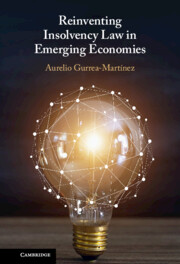Refine search
Actions for selected content:
3 results
Hybrid procedures in the management of hypoplastic left heart syndrome: a systematic review
-
- Journal:
- Cardiology in the Young , First View
- Published online by Cambridge University Press:
- 05 November 2025, pp. 1-22
-
- Article
-
- You have access
- Open access
- HTML
- Export citation
4 - Promotion of Workouts and Hybrid Procedures
- from Part III - Towards a New Insolvency Framework in Emerging Economies
-
- Book:
- Reinventing Insolvency Law in Emerging Economies
- Published online:
- 06 June 2024
- Print publication:
- 13 June 2024, pp 125-149
-
- Chapter
- Export citation

Reinventing Insolvency Law in Emerging Economies
-
- Published online:
- 06 June 2024
- Print publication:
- 13 June 2024
